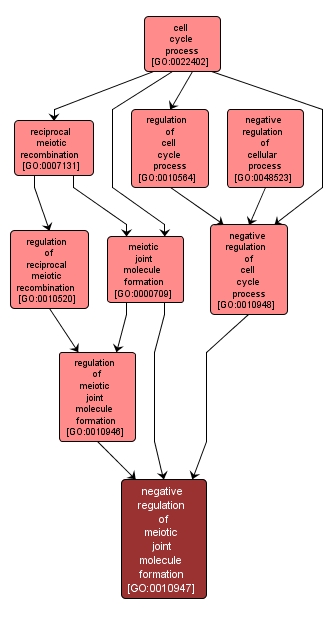| Desc: |
Any process that decreases the frequency, rate or extent of meiotic joint molecule formation. Meiotic joint molecule formation is the conversion of the paired broken DNA and homologous duplex DNA into a four-stranded branched intermediate, known as a joint molecule, formed during meiotic recombination. |














